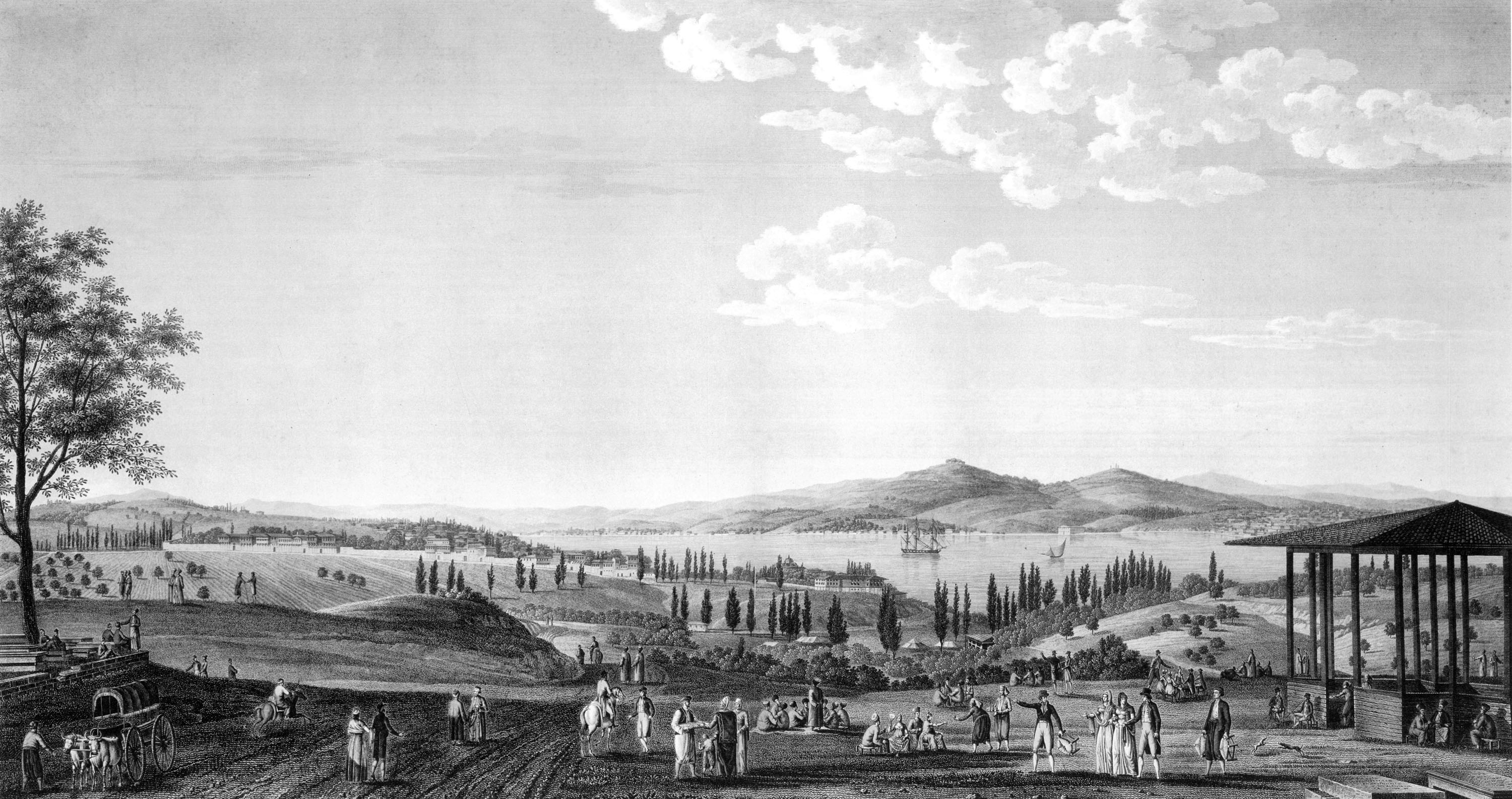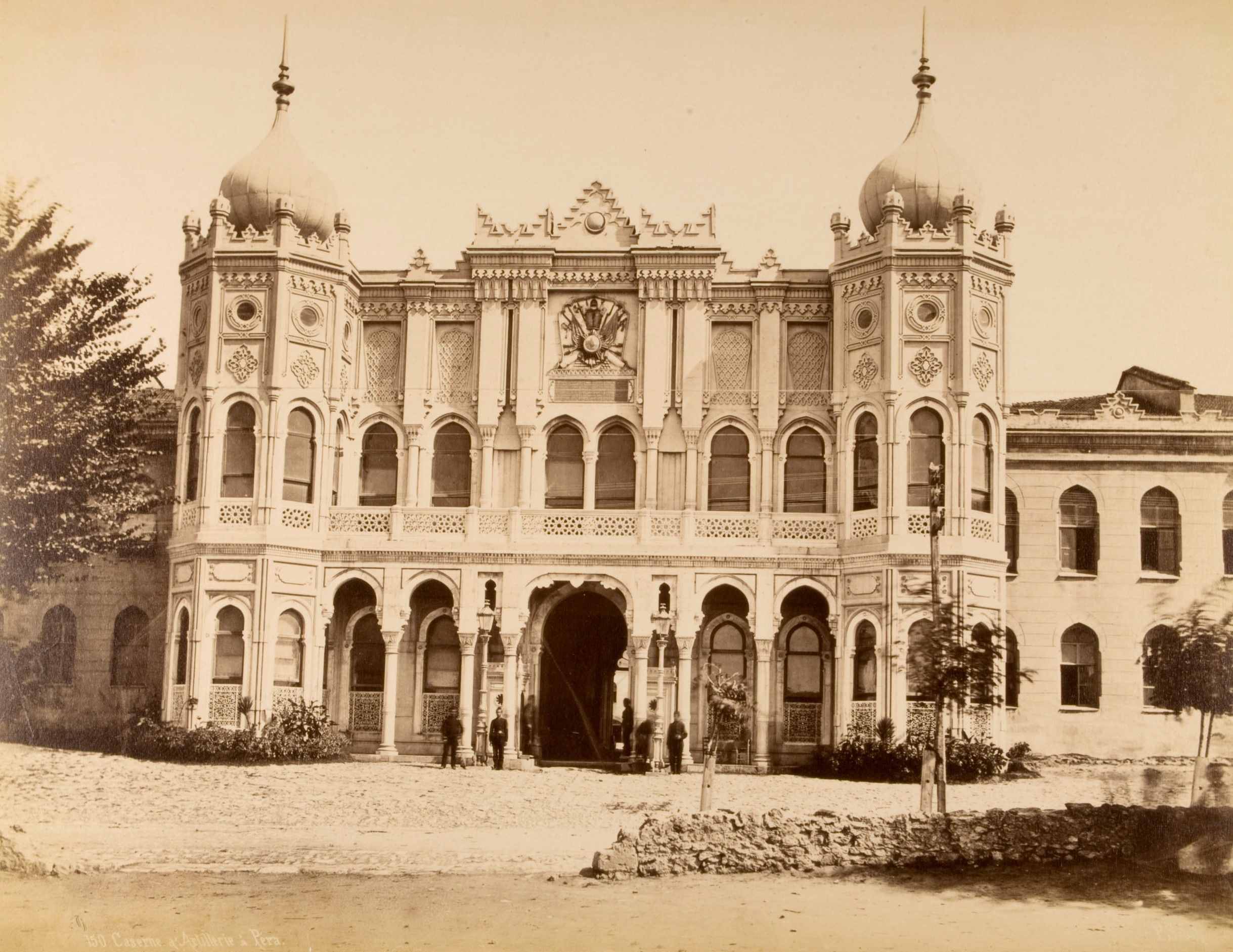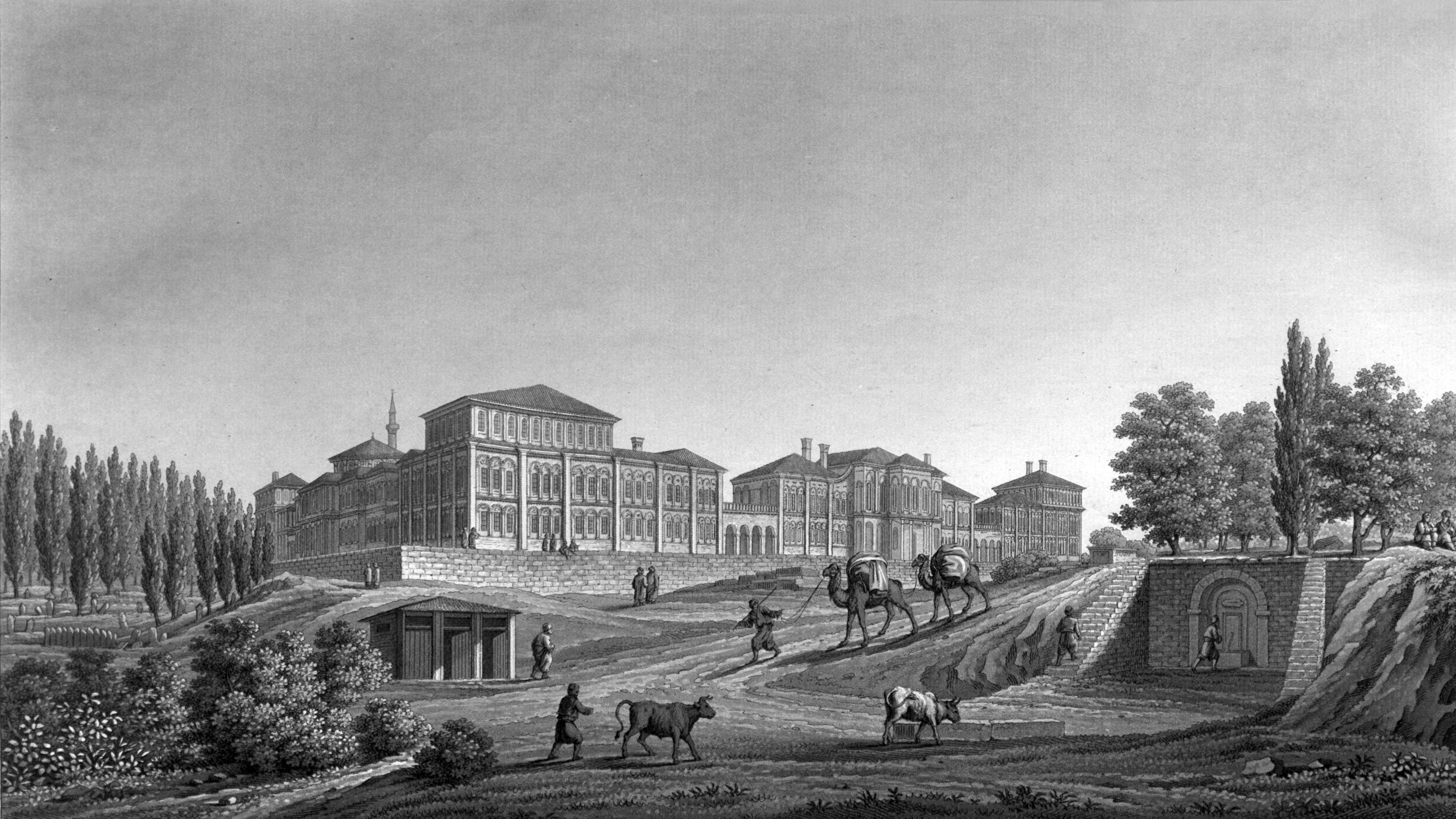
View of Taksim Gardens during the late 18th century. In 1869, it was opened as the first public garden of İstanbul.
Antoine-Ignace Melling, Voyage Pittoresque de Constantinople et des Rives du Bosphore d’Apres les Dessins de M. Melling [1819].
Suna ve İnan Kıraç Vakfı İstanbul Research Institute Archive.

The monumental entrance of the Artillery Corps Barracks, late-19th century. Suna and İnan Kıraç Foundation Photography Collection.
The military structure that was commissioned by Selim III for the army’s artillery units, was completed in 1806 for the gate guard troops, was known as the “Topçu Kışlası / Beyoğlu Kışlası / Taksim Kışlası.” This marked the northern border of the square that subsequently took shape. These barracks sustained heavy damage during the Kabakçı Revolt (1807) which exploded onto the scene just a year after the structure was inaugurated. Documents found in the Prime Ministry Ottoman Archives indicate that Mahmud II appointed imperial chief architect, Hafız Mehmed Emin Agha and foremen Marki, Nikola and Komyanos to rebuild the barracks in 1812.

The Taksim Artillery Corps Barracks were renovated in 1812 by Sultan Mahmud II. A Moslem cemetery is seen to the left of the structure, with the water distribution depot and a fountain are visible in the foreground.
Charles de Pertusier, Atlas des Promenades Pittoresques dans Constantinople et sur les Rives du Bosphore, 1817, Paris. Istanbul, Deutsches Archäologisches Institut Archive.
An engraving by Préaulx included in Charles Pertusier’s album published in 1817 depicts the way the barracks looked after this renovation job. The final appearance of the barracks structure which saw more repair work in 1847, 1862 and 1893, reiterates the layout of 19th century Ottoman barracks: A rectangular courtyard with a mosque in the center surrounded with two-storey wings, as well as three-storey tower-like masses positioned in the corners. Countering the bare expression of the Empiric-style that dominates the facades, the entry, which opens westward (onto Cumhuriyet Caddesi) features traces of the Orientalist-style and most likely took on its current shape during the renovation carried out during the reign of Abdülaziz (1861-1876).
The exhibition Taksim: the Heart of Istanbul can be seen free of admissions at the Istanbul Research Institute until October 11.